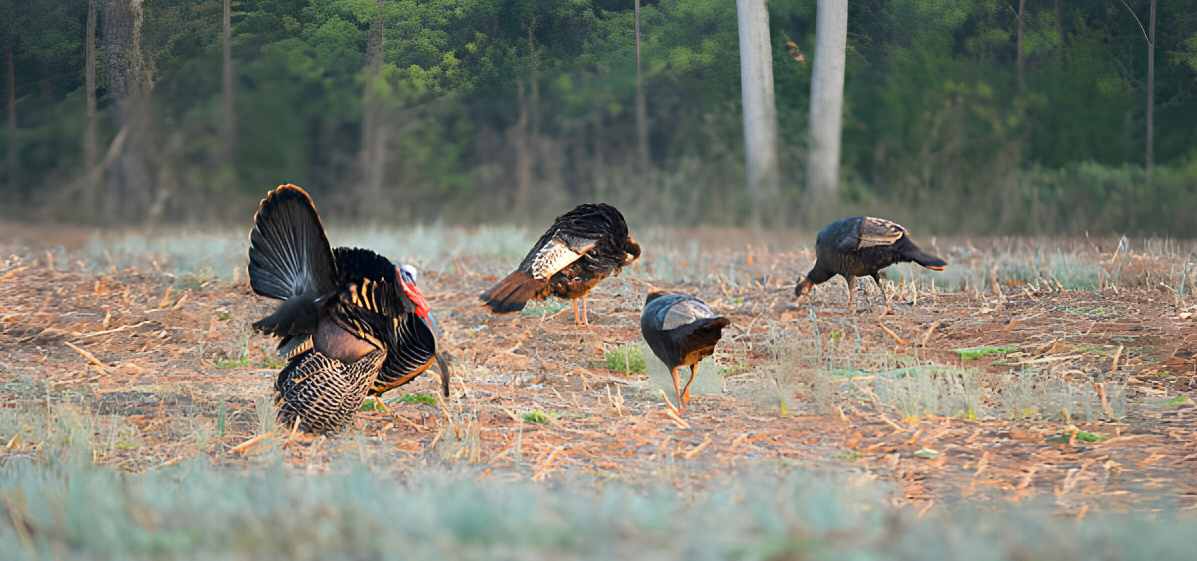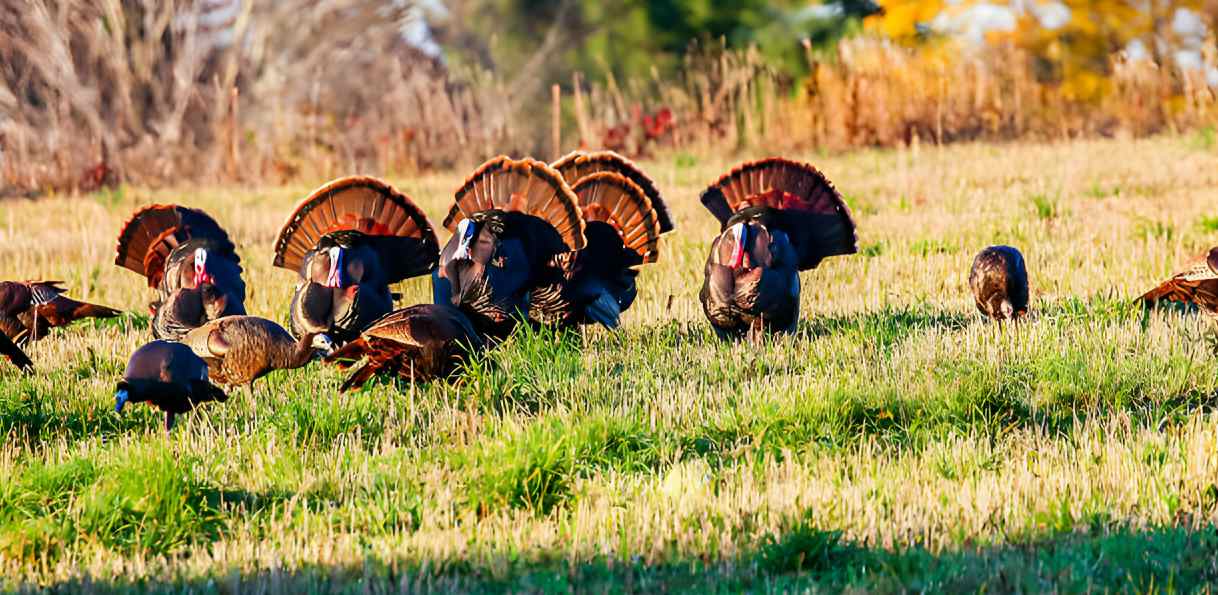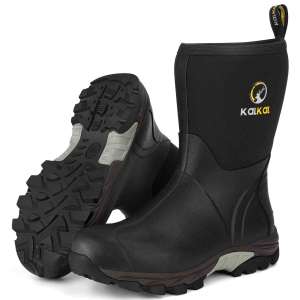Turkey hunting is an ancient sport and a loving pastime for many. Being a hunter, I have been thinking about the best time to turkey hunt. For many outdoor buffs, it is very tricky to figure out when the best time to hunt these cunning birds is, especially when you want success.
In this article, you will discover the best times to turkey hunt all year, including the times, peak activity and the best season for doing that with pro tips.
When Is The Best Time To Hunt Turkey?
Turkey hunting is a favorite habit, but you can never find any specific hunting time. The best time to turkey hunt can vary depending on factors of the breeding season and hunting preferences.
But I have noticed that everyone has preferences for the time, and of course, it also depends upon the terrain and what time of the day is most effective in calling in a mature tom.
Here, you have some of the ideal times of day to bag your bird.
1. The Best Time of Day to Hunt Turkey
Morning Time
The best time to turkey hunt is during the early morning hours, shortly after sunrise. This is the time when turkeys are most active and receptive to calls, making them easier to locate and lure within shooting range. While some hunters may also have success hunting in the late afternoon, the morning hours are considered optimal for turkey hunting.
Afternoon Time
Evening hunts can be successful, especially for eastern turkeys, and they require a more passive and patient wait than morning hunts for the same species. During the hunts, hunters practice an adjusted approach, arrange standby locations based on scouting, and employ careful tactics due to birds’ habits during this time.
2. Turkey Hunting Seasons
In most regions, there are separate seasons for Spring and Fall turkey hunting. Spring turkey hunting typically occurs during mating season when male turkeys, or gobblers, are most active and responsive to calls. Fall turkey hunting seasons often coincide with the birds’ feeding patterns as they prepare for winter.
Normally, the Spring turkey hunting seasons start from March to May. And, the Fall turkey hunting seasons are in October to December. The specific season dates vary in different states and regions.
3. When Is Turkey Most Active?
Turkey Activity Patterns
Turkeys like to move around a lot in the morning and evening. They sleep in trees at night and come down to the ground after the sun comes up. During the day, they eat, find mates, and hang out with other turkeys. They’re busiest right after the sun rises and before it sets. That’s when you’re most likely to see them moving around and doing things.
Wake-Up Time for Turkeys
Turkeys typically wake up shortly before sunrise, descending from their roosts to start foraging for food. This is prime time for hunters to catch them off guard and capitalize on their morning activity.
4. Best Time to Hunt Spring Turkey
Spring is the best time to turkey hunt due to the birds’ mating season. Male turkeys are vocal, and they are responsive to calls for the attention of hens. Hunting during the spring allows hunters to take advantage of this heightened activity and increase their chances of success.
5. Best Time to Hunt Fall Turkey
Fall turkey hunting is also a productive time, particularly when turkeys are actively seeking food sources to prepare for winter. While the timing may differ slightly from spring hunting, the principles of early morning hunting and locating feeding areas remain consistent.

10 Useful Turkey Hunting Tips
Turkey hunting requires skill, patience, and the right approach, including the best time to turkey hunt to be successful. You will find some pro tips for turkey hunting based on how to locate turkeys, essential gear for the hunt, and the best weapon strategies to hit notable success.
1. Scout Your Hunting location
Spend some time searching before the turkey season to get trained with the terrain you plan to hunt. Check for signs of turkeys by looking for paw marks, droppings, scratching, and feathers. This will enable you to find out the most suitable spots and set up your hunting equipment.
2. Use Quality Turkey Calls
Invest in a quality type of call, if possible, such as box calls, slate calls, and diaphragm calls. Practice these calls to make the sounds of turkeys in order to attract them to your position. A proper calling can significantly boost the chances of you bringing a turkey within shooting range.
Box Calls:
Specialty: Ideal for beginners, easy to operate, and produce loud, realistic vocals.
Recommendation: Houdini Strut Commander Box Call
Push-and-Pull Calls:
Specialty: Known for consistent sounds that pressure a bird to respond or react.
Recommendation: Quaker Boy Cyclone Waterproof Push-Pin Turkey Call
Mouth Calls:
Specialty: Can produce clean, effortless yelps and kee kees.
Recommendation: Slayer Calls’ Black Bat Wing
Friction Calls:
Specialty: Must-have items for open country or windy conditions.
Recommendation: MeatEater x Phelps Box Call or Slate Over Glass Pot Call
3. Dress in Camouflage
Use camouflage clothing from head to toe as a defensive measure to cover up the area around the dangerous area. This will disguise you as the turkeys’ blind spot by their strong eyesight. As well as this, keep a protective face mask and gloves on to cover your folds of skin.
4. Set Up Decoys
Take into account turkey decoys for you to create fidelity with your hunting setup. Position decoys that resemble real turkeys to draw nearby birds in. Double-check the placement of your decoys within shooting range of your stand and have a view of the area.
Read also: Hunting with Turkey Decoys-How to Use A Turkey Decoy
5. Choose the Right Weapon
A shotgun will be your best bet for turkey hunting. Experts recommend using turkey-specific ammunition and opting for a shotgun to achieve better accuracy and ensure appropriate shot distribution. Shotgun with a tight choke. Otherwise, if you find a challenge for an appealing thing, you can also shoot turkeys with a bow or a crossbow.
In summary, there are some useful tips for successful turkey hunting and we have listed them below:
- Using binoculars and spotting areas
- Carrying turkey calls, like adding a pot call, box name, etc
- Taking a shotgun with an OEM choke.
- Clothing with permethrin to prevent illnesses.
- Adjusting comb top taking pictures
- Searching common area thoroughly
- Paying attention to different hunters’ activities.
- Learning turkey behavior and habitat
- Being patient and persistent.
- Using a greater passive and patient method.
5 Insights to Improve Your Turkey Hunting Success
No one said spring turkey hunting is easy. If you expect to come home with the game every time, try a different species, maybe doves, squirrels, or rabbits.
Turkeys can outwit anyone. To reduce the odds of that happening to you, use the following insights for tagging a coarse-bearded tom this spring.
1. Take A Hike to Find Fresh Birds
As more people go hunting for spring turkeys, the ones near easy-to-reach places get called a lot. This makes them harder to catch. To find turkeys that are easier to catch, walk away from where cars can go. Turkeys that don’t hear hunters are easier to catch. Camping close to where turkeys sleep can also help you catch them.
2. Locate Birds
Before driving dirty roads in backwoods areas such as national forests, stop every few hundred yards to call. Walk out ridges and logging trails, listening to pinpoint gobbler locations. Try owl, crow or locator calls. But only turn to hen calls as a last resort. If you use them, don’t call the birds all the way in.
3. Calling Rut Stuck
It’s essential to switch up your calls as you don’t want to get into a calling rut. If you master one or two of your calls, you end up restricting yourself to those calls most of the time because it is human nature to do so.
Turkeys consistently change up their exercises. All these things, from the weather stage of breeding to competition from other toms… can all help you choose one thing or another to match the current call.
4. Don’t Go too Close
Keep your distance from the pit master. It was almost morning light when my friend Tom finally answered with a hoot after the owls. Not getting a call is one of the most common blunders while hunting. Turkeys often sound way farther away than they actually are. Instead of stalking, the hunt has ended before it has even begun.
5. A Silent Approach
Gobblers are not always talkative. You can successfully catch these birds using a different technique. Find the sign, set up in the area where they are, and hunt them as if you were pursuing a wary old deer buck.
Look for fresh scratching, wing-tip drag marks, droppings, and feathers to see where gobblers have recently been. Also, look from ridges or other high points to see where birds feed in fields or travel at different times of day. Find a tree broader than your body to sit against, or construct a modest hunting blind and wait. Often, a large flock will walk past your trapping site.
There are cases when the best option is to play it safe, which helps for sure. And it bangs, it’s all over!
Conclusion
The best time to turkey hunt is important for success in the field. Alongside this knowledge, your experience incorporating valuable tips and tricks can further add value to your hunting experience.
Be sure to scout your hunting area beforehand. Try counter the best time to turkey hunt, turkey calls, dress properly camouflaged, set up decoys strategically, and choose the right weapon, which are the ways to strike while the iron is hot.
By combining tactics while hunting during the best time, you’ll get an improved chance of bagging a trophy turkey. So, seize the opportunity, enforce these strategies, and go on your next turkey-hunting adventure with the whole confidence! Happy hunting!



















Leave a reply